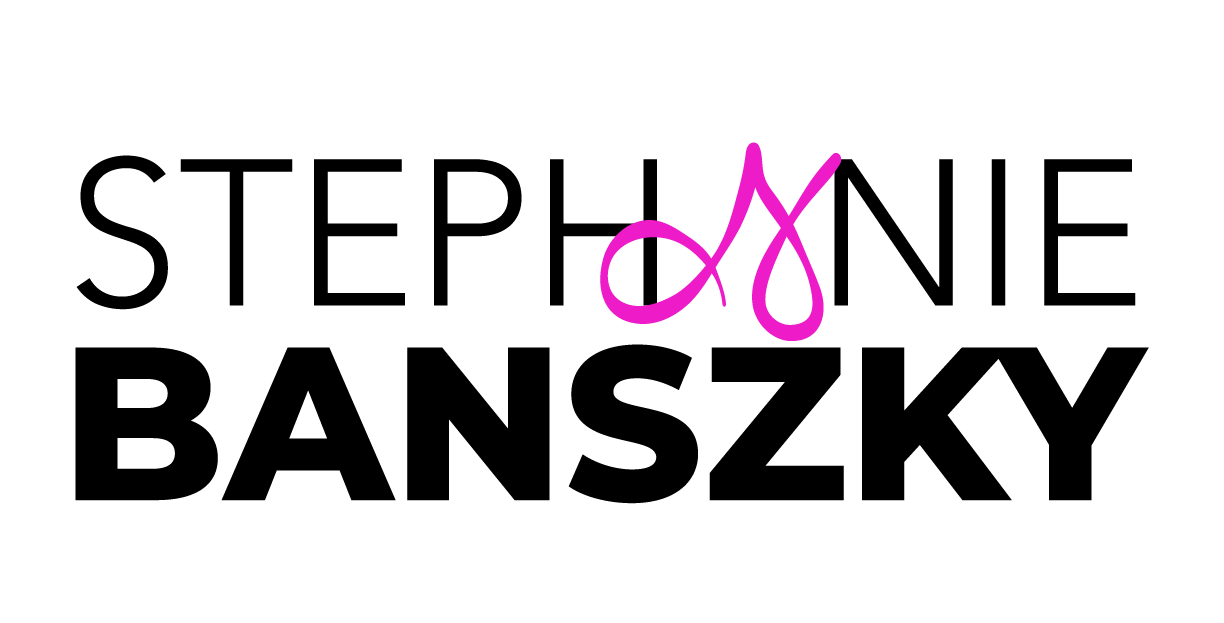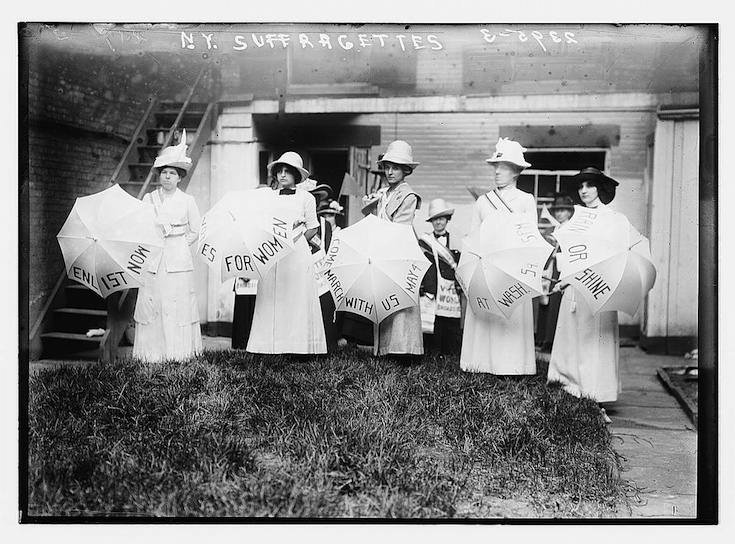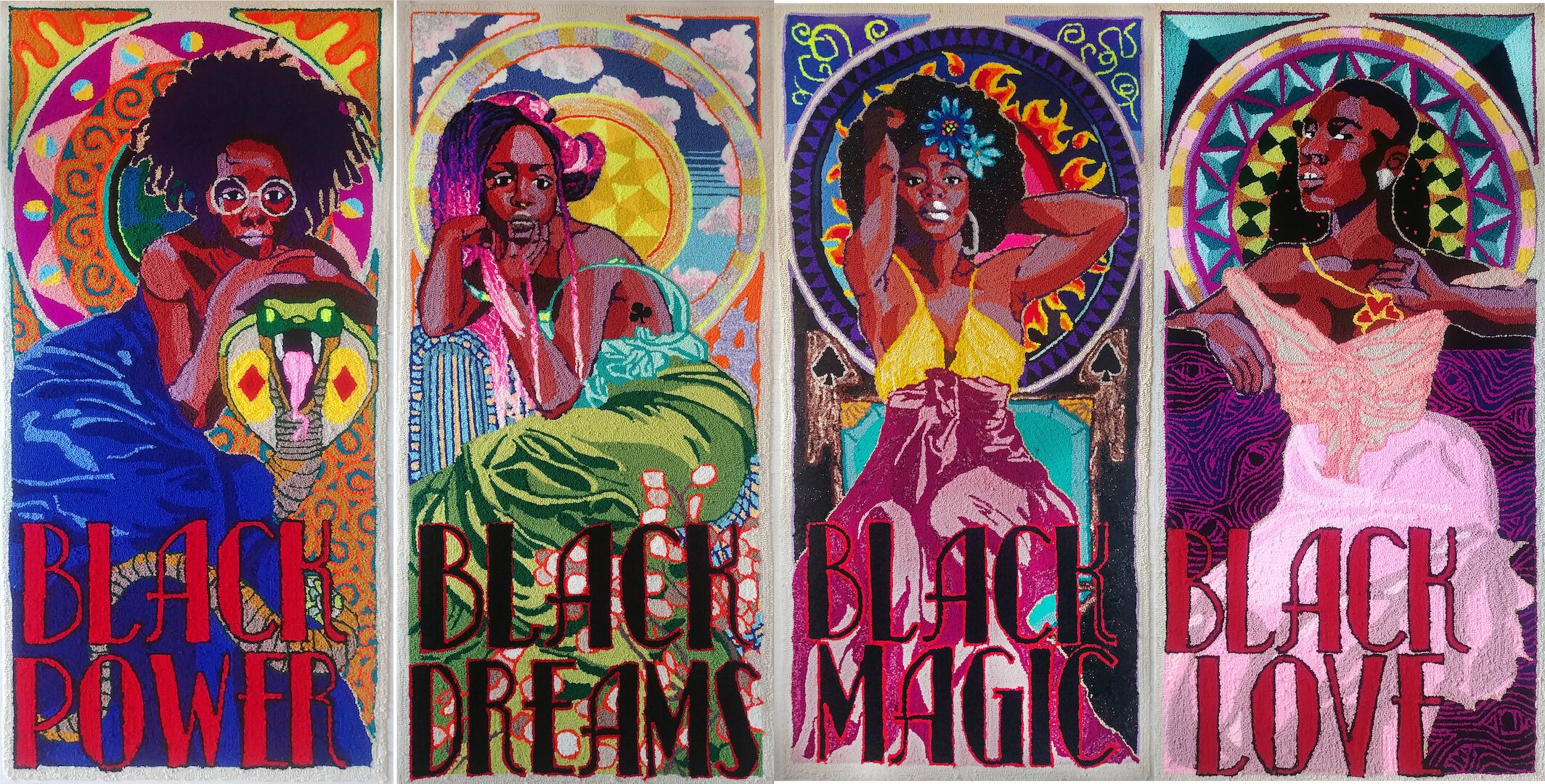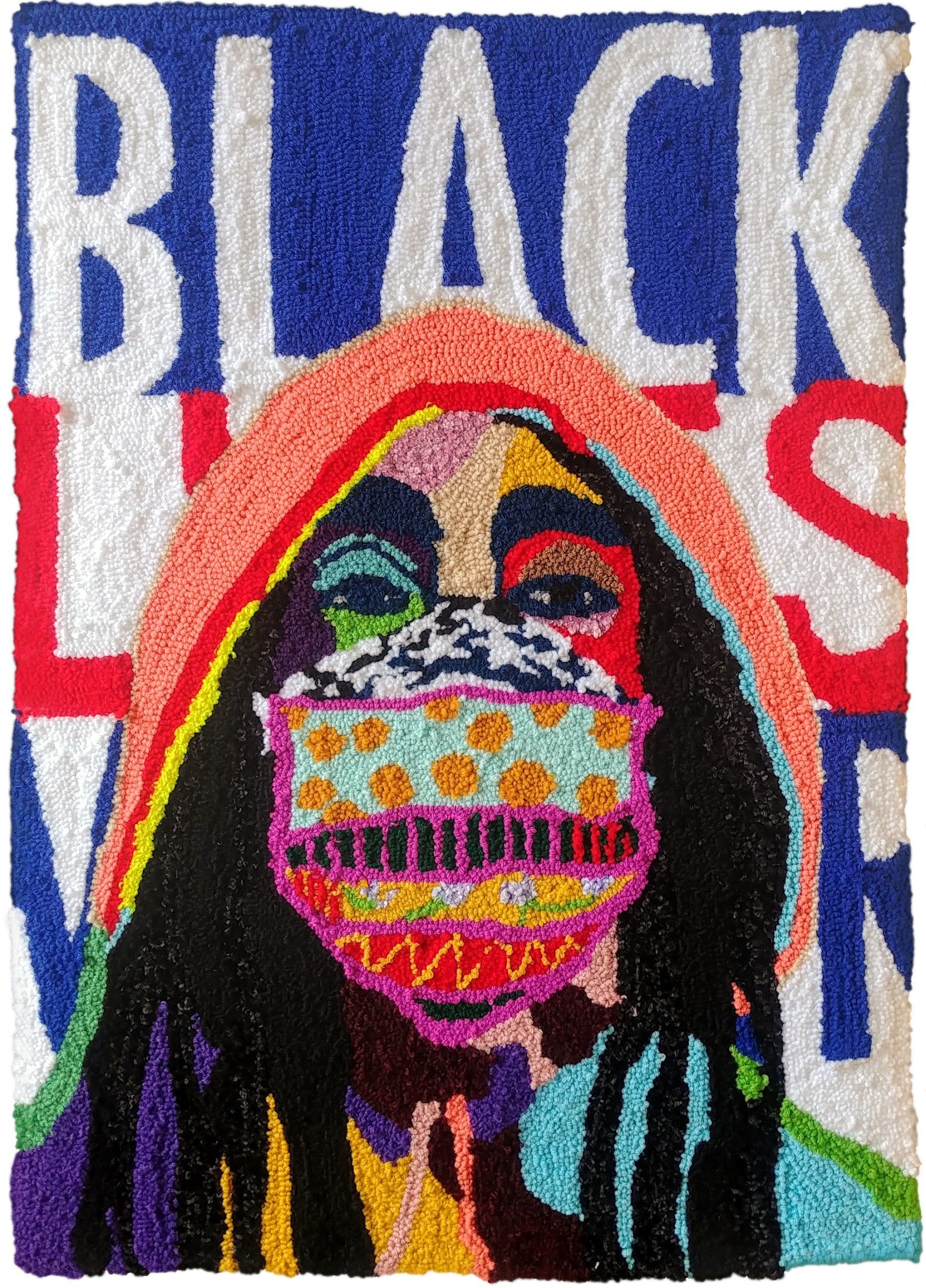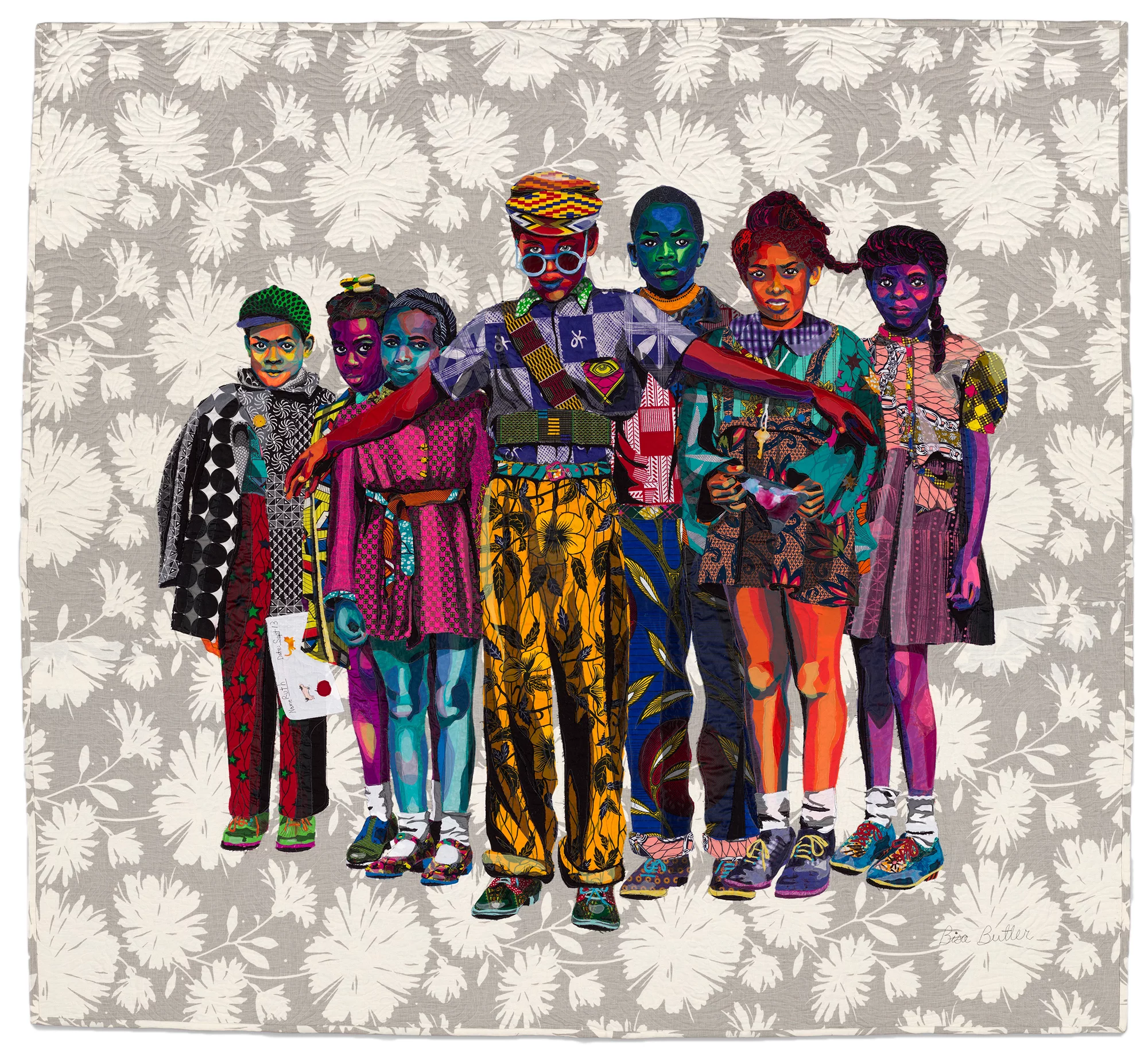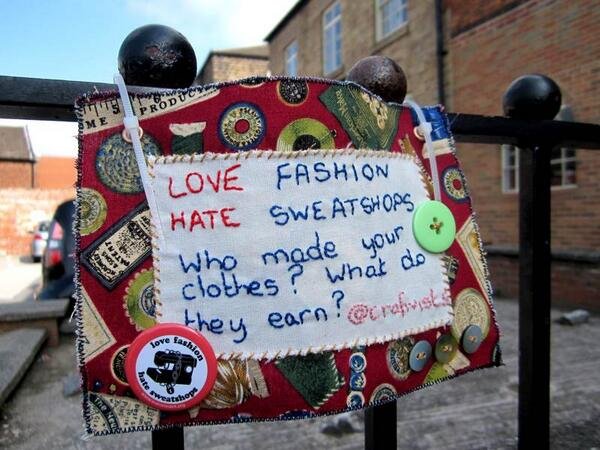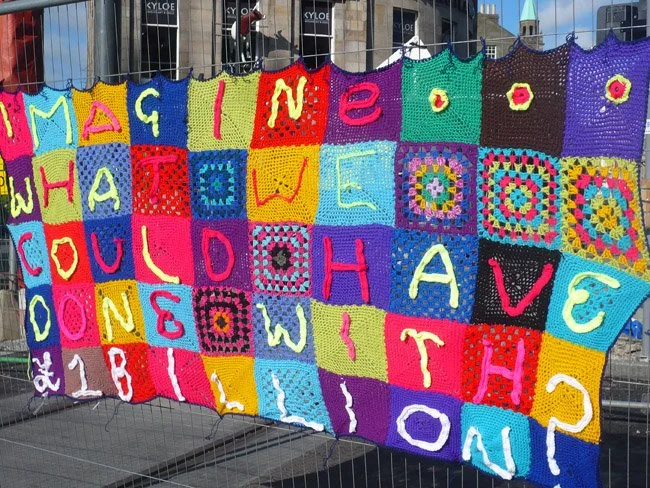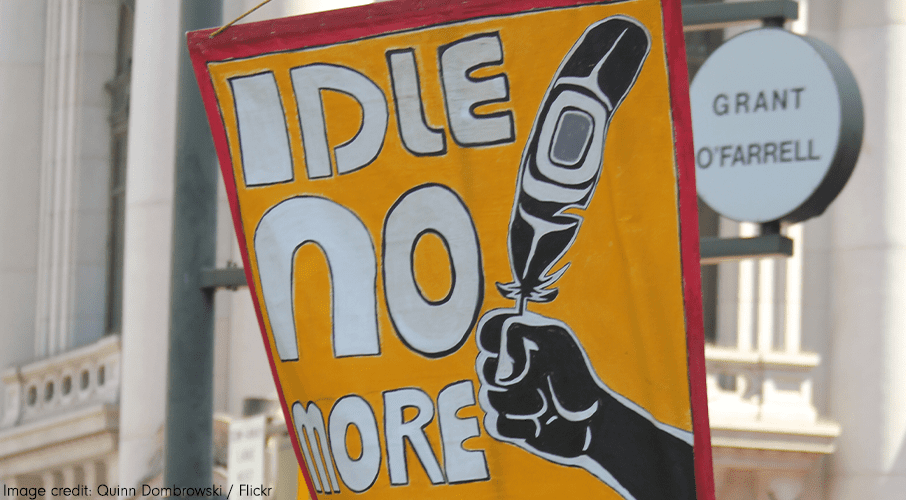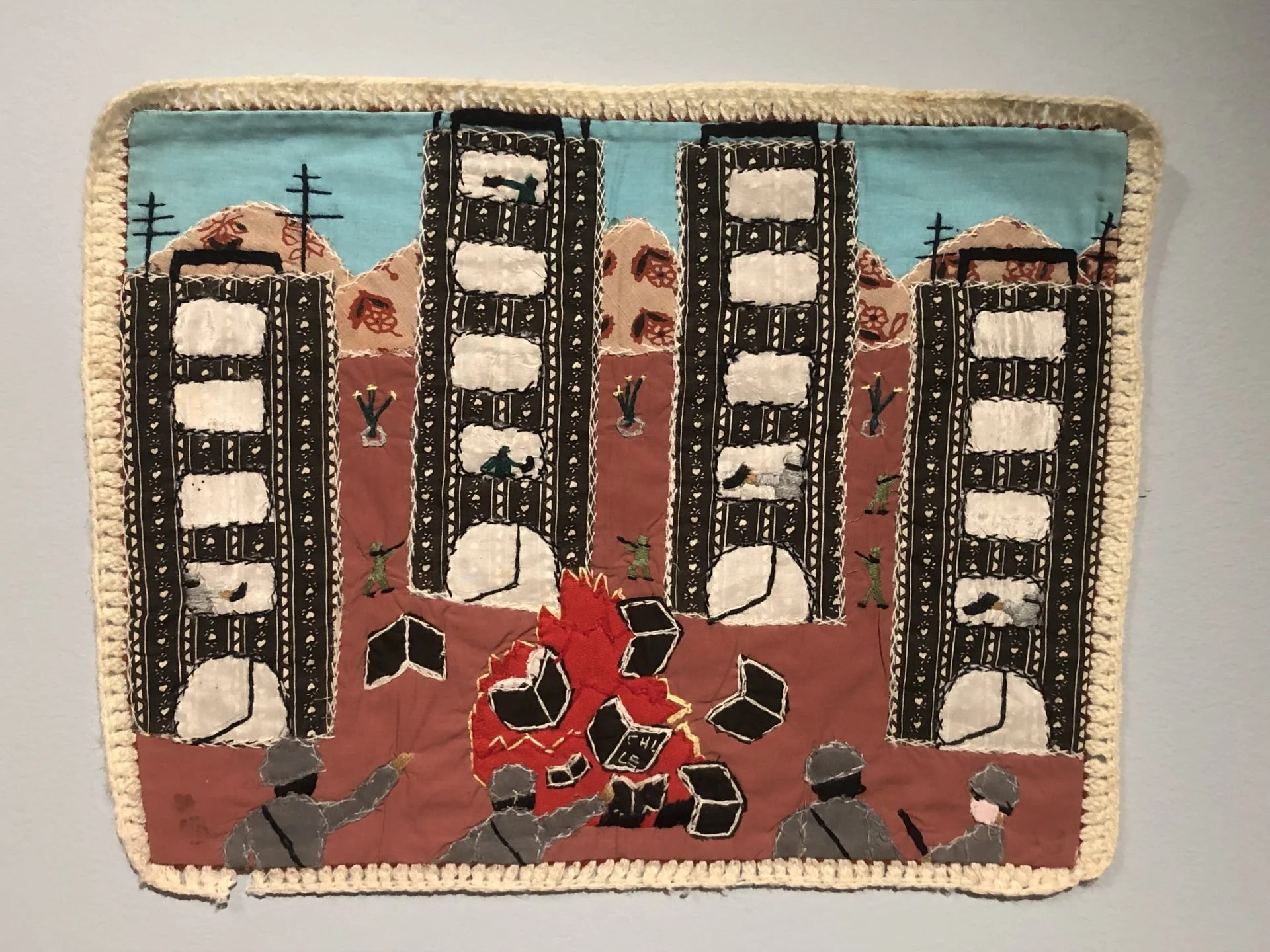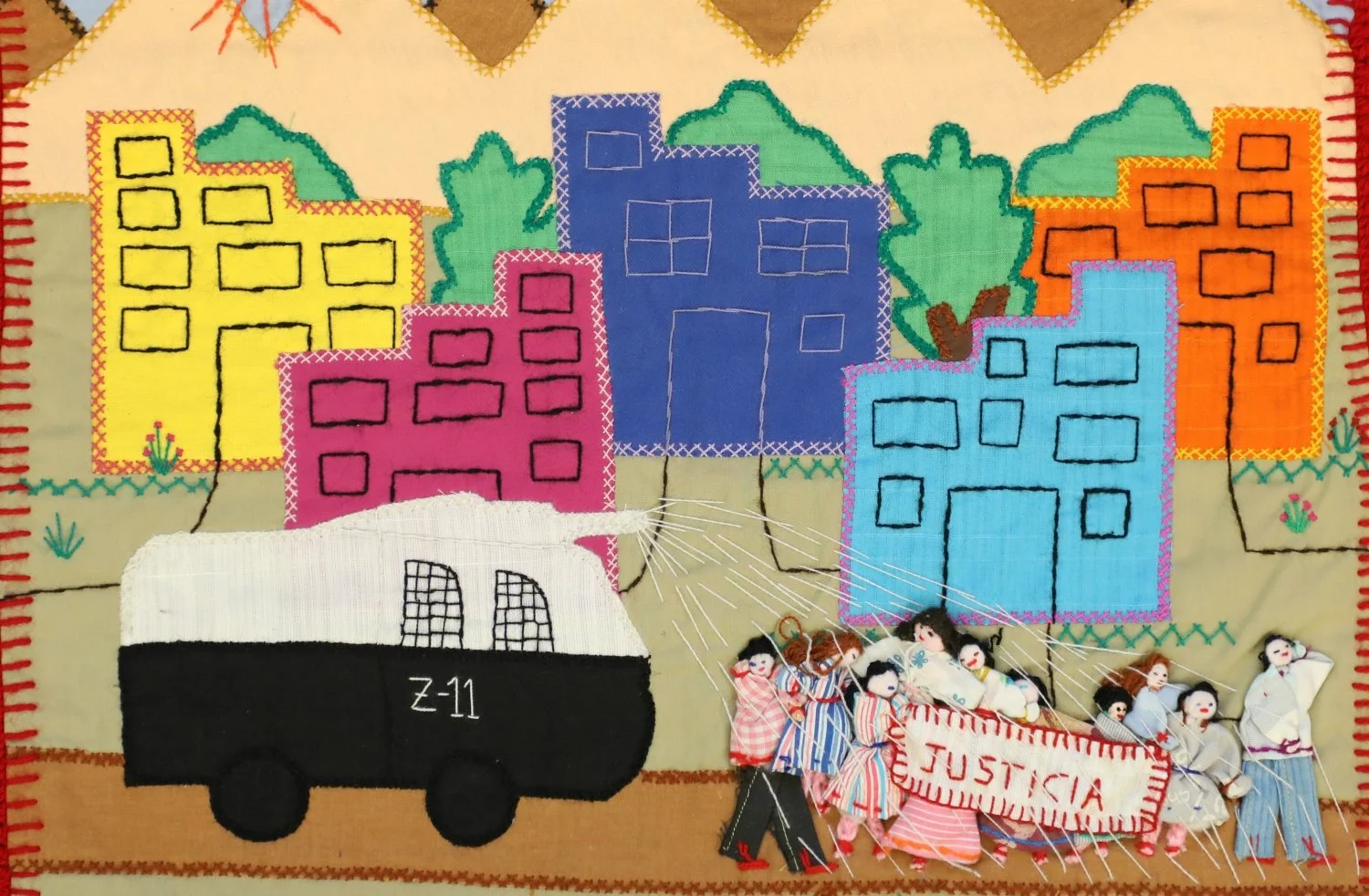Fabric Art and Activism
Suffragettes march with home made protest banners
Fibre has been a controversial medium. Previously an art form dominated by men, then in a move to strengthen the patriarchy, colonialism, and systems of control, it was further relegated mainly to women, the lower class and BIPOC (as an additional system of segregation and control) in the 1700’s.
Subversive activism through fibre became a way for marginalised folks to express their thoughts and tell their stories.
First wave feminism used fiber to protest. BIPOC folks have maintained a practice of storytelling through fibre to capture their stories, and histories as a subversive resistance under colonisation.
It was a way to record and pass on family stories, cultural histories, acts of oppression and genocide, and more.
It is now being reclaimed by intersectional feminists as a mode for activism.
As such, this project will be manifesting in a very intersectional feminist nature.
Using Umbrellas to Share the Word
Gandhi had people spinning cotton (1920’s) as a way for India to become more self-sufficient and less sufficient on British-made textiles
Arpilleras
The Arpilleras textiles were made by women (Apilleristas) in response to the Pinochet regime in Chile in the 1970’s. When Pinochet came into power, people (mostly men) would disappear, while the women were left to suffer in economic insecurity. The women documented their lives living under the regime with gristly images of war, murder, torture, starvation, poverty, food insecurity, exile, and more. These pieces were made in secret and sold by the church overseas to make money for the women, as well as share the story about what was happening behind closed borders. These tapestries were instrumental in letting the world know what atrocities were being conducted in Chile.
Arpilleras Textiles
Current Craftivists
The REDress Project
“The REDress Project focuses around the issue of missing or murdered Aboriginal women across Canada. It is an installation art project based on an aesthetic response to this critical national issue. The project has been installed in public spaces throughout Canada and the United States as a visual reminder of the staggering number of women who are no longer with us. Through the installation I hope to draw attention to the gendered and racialized nature of violent crimes against Aboriginal women and to evoke a presence through the marking of absence.” ~ Artist Jaime Black
Red Dresses hang in the forest to represent the Missing and Murdered Indigenous Women and Girls in Canada
Simone Elizabeth Saunders
Simone Elizabeth Saunders is a Calgary artist that through tufting and “carpeting” she creates beautiful and impactful depictions of black power, black oppression, and black joy. “Saunders explores themes of the diaspora, ancestorship and Black womanhood. Her colourful textiles highlight motifs and iconography from her Jamaican heritage and engage with socio-cultural factors reclaiming power from oppressive ideologies” (From Simone Elizabeth Saunders Artist Statement July 2023)
Bisa Butler
Bisa Butler is a contemporary African American artist that depicts moments from her memories, photographs of Black figures, hip-hop lyrics, black history, and images that remind her of her childhood and people she could have known. She represents these through intricate, vibrant, and emotional, quilted textile art. She is known for her vibrantly stunning, larger than life sized, quilted portraits that captivate viewers. She re-tells the stories and histories of Black Americans and their struggles through textiles.
The Red Dress Project
The Red Dress Project was a multi year (2009-2023) project conceived by British Artist Kirstie Macleod, where a red dress was taken to communities of women all around the world. These women stitched and embroidered their stories, and cultural symbols on the dress. This dress was constructed out of “87 pieces of burgundy silk dupion, the garment has been worked on by 367 women/girls, 11 men/boys and 2 non-binary artists from 51 countries. All 141 commissioned embroiderers were paid for their work, and receive a portion of all ongoing exhibition fees, merchandise, and the opportunity to sell their work through the Red Dress Etsy shop. The rest of the embroidery was added by willing audience at various exhibitions & events. The Red Dress project provides an artistic platform for women around the world, many of whom are vulnerable and live in poverty, to tell their personal stories through embroidery.
Sarah Corbett- Craftivist Collective
Sarah Corbett (UK) has been engaging community members in subtle protest and craftivism since 2008 as a soft and passive response. Fibre as a gentle form of protest creates in-roads on important and often controversial issues that a more aggressive, confrontational form of activism wouldn’t achieve. Craftivism is about taking a thoughtful approach to mindful activism, to build inroads, make critical friendships instead of aggressive enemies, encourage empathy, and embrace positivity.
